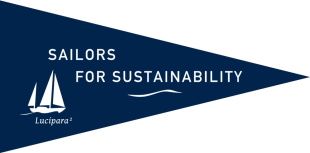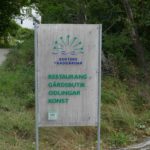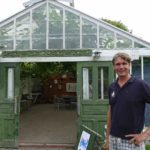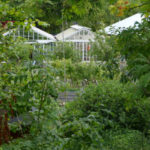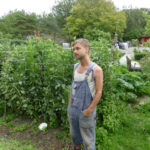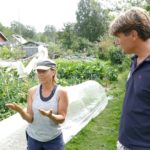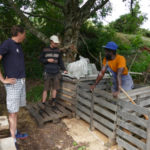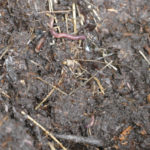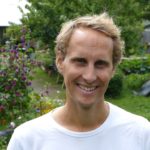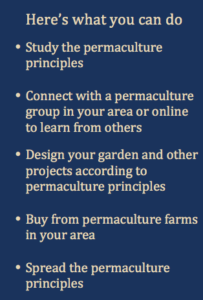Permaculture on a Swedish Island (SWE)
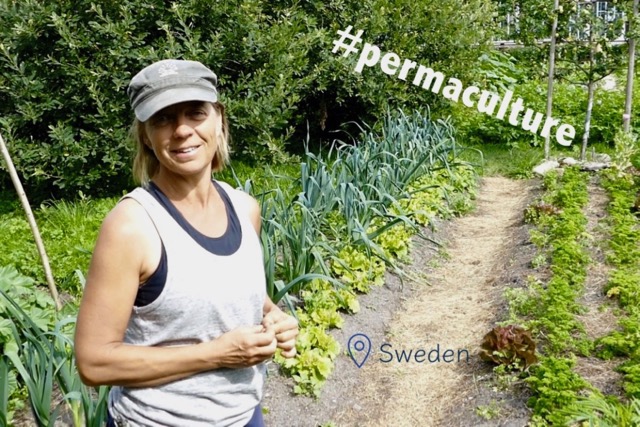
How a family on a Swedish island applies permaculture principles on their organic farm.
Contributes to achieving the following UN Sustainable Development Goals:
“An organic farm, on this rocky island?” Ivar looks at me in surprise. We are anchored at South Koster, a small island on the Swedish West Coast. We visited the National Park here, which we described in our sustainable solution about nature conservation. On our hikes across the island we walked along rugged coastlines and ancient forests. We crossed some settlements consisting mainly of summerhouses and found that the entire island lives mostly off tourists. These circumstances make it hard to fathom that there is fertile soil for a farm here. Our disbelief is further fueled by the geographical location. We are in Northern Europe, almost in Norway, so the growing season isn’t very long.
Family Farm with Principles
Ivar’s doubts subside when we find Kosters Trädgårdar, the Koster gardens. Visitors’ bicycles scattered around the entrance give away that it is more than a farm. Indeed, when we follow the path from the road through the gardens, delicious smells guide us to a busy restaurant. Wooden tables around the building are full of families enjoying lunch. Next to the restaurant is a vegetable garden with a shed in the middle. It houses a small shop which sells freshly baked bread, vegetables from the garden and books about permaculture.
Intrigued by this idyllic place, we speak to founders Helena and Stefan von Bothmer. They invite us for lunch with the staff and explain that they bought the land twenty years ago after having worked on several farms. When they thought about how they wanted to live, they took into account the good and bad practices they had experienced. Permaculture became the overarching guideline. It influences what they plant, where they plant and how they work the land. It sounds rather abstract to us and we still have a lot of questions, so Helena proposes to give us a lesson on permaculture that afternoon.
Ecology as a Starting Point
After lunch, Helena and Stefan’s son Benjamin gives us a tour of the garden. He shows us that they grow a variety of different crops such as lettuce, leek, tomatoes, pumpkins, apples and much more. Benjamin explains that a healthy soil is the foundation for the farm, so they continuously strive to enrich the soil. They do so with compost, for example.
Helena then explains the basics of permaculture, which has its origins in Australia in the 1970s and is applied all over the world. “It is a matter of good design. Ecological principles can serve as guideline for any project, whether it concerns running a farm or running a business. What matters are the connections between the elements of the project, how they interact. The more connections the elements make among each other, the better the results will be and the more resilient the overall system will be.”
So what are those ecological principles? Helena continues: “The basic principles are care for the soil, for nature, for people, for sufficient financial resources and a fair distribution of revenues. Ask yourself whether others can imitate your actions, or whether they are at the expense of nature and people. The use of finite resources such as fertilizer or pesticides is therefore by definition a problem.” Slowly we begin to understand.
Clever Use of Natural Resources
Those principles sound logical, but what do they mean in practical terms for their farm? “It starts with observation. How does the sun travel through the garden, what does the wind do, where does the water flow, what kind of soil is there and how do we move through the garden. Then you look how you can best use the natural resources. For example, on the edge of the garden we created a hedge. This forms a sort of heat trap that also stops the wind. Next to it are the vegetables that need a lot of sun and heat. Crops that need the most attention are planted along the routes we walk most often, so between the farmhouse and the restaurant. “
Helena explains the importance of continuously improving the soil. “We use naturally occurring soil improvers, such as clover and worms. Our organic manure consists of composted leftovers from the restaurant and ‘waste’ from the land. And the vegetable beds follow a cycle of several years; crops alternate so that the soil is not depleted. In winter, seaweed and straw enrich the soil.”
Permaculture and People
Permaculture principles are also applied in the restaurant, both in the kitchen and in the workplace. They use the produce from the garden, cook with seasonal ingredients and serve mostly vegetarian dishes. The restaurant staff is organised as a cooperative, which means that they are co-owners who decide together and fairly share in the profits. This gives them a vested interest in their work.
Helena and Stefan do not deny that it has been hard work since the start. Their farming methods are quite labour intensive. They hire seasonal employees to help with the harvest and cultivation of the land. The opportunity to work on a permaculture farm attracts young people from all over the globe, as we witness first-hand when we are introduced to a young farmer from Haiti and a Swedish biology student. While the youngsters get valuable training in this paradise-like environment, for Kosters Trädgårdar it is a good way to get help and spread the principles of permaculture.
Working with Nature
Thanks to Helena’s explanations the somewhat abstract concept of permaculture became concrete during our visit. The idea is to work with nature, not against it. Conventional, industrial farming is often characterized by monocultures to increase short-term yields. This leads to constant efforts to fight weeds, eliminate insects and add artificial nutrients to the soil. Such practices are unsustainable, as they rely on fossil fuels and lead to soil erosion, pollution and nutrient depletion. Permaculture, on the other hand, is designed to use only naturally occurring elements without producing waste. At Kosters Trädgårdar it means making optimal use of the geographical conditions, plant varied crops, use natural fertilizer and fully involve all staff. Their way of growing food is evidently sustainable.
Permaculture beyond Farming
According to Helena permaculture not only applies to farming, but to society as a whole. She elaborates: “The key to a sustainable society are connections. Instead of competition, the emphasis should be on productive connections. The more connections there are in a system, the more sustainable the system is.”
We understand that permaculture does not set strict rules. It is not a tick-the-box exercise, but rather a way of doing things. That is precisely why it can be applied in different circumstances. The basic principles of permaculture mandate responsible interaction with each other and our planet. If you follow that rule in your everyday life, you can act sustainably.
What for us started as an expedition to an organic farm on a Swedish island, became a lesson in a design concept that has sustainability at its core. We saw its best-known application, farming, and experienced first-hand how a family manages successfully to run an organic farm on a rocky island thanks to permaculture. If it is possible there, it should be possible everywhere.
For further reading, we recommend:
-
Permaculture Design Principles: An explanation of the 12 principles of permaculture
-
Permaculture Institute: Links to articles and videos about permaculture
-
Permaculture Magazine on Facebook: News, articles and videos about permaculture
Related Sustainable Solutions

Smart with Seaweed (NZL)
In New Zealand we learn how seaweed can be used to improve soil biology, with significant environmental and economic benefits for all farm types.

Urban Gardening (NZL)
In New Zealand’s cities we discover various ways of urban gardening and learn about the many benefits of growing food in cities.

Improving Children's Health with Veggies (PER)
High in the Peruvian Andes, poor school children learn how to grow and cook healthy, organic veggies. An example for the world?

Meatless in Buenos Aires (ARG)
In the beef capital of the world, the tide is turning in favour of plant-based diets. Good news for human health, animals, nature, and the climate.

Alda's Organic Neighbourhood Farm (URY)
Organic farmer Alda explains how fertile soil enables her to grow food without poison, increases biodiversity, and has positive climate effects.

Natural Coffee (BRA)
We visit a coffee forest in Brazil and learn all about the environmental and social benefits of agro-ecology.

Food Forests (BRA)
In Brazil, Ernst Götsch explains to us how to grow healthy food in cooperation with the forest.

Bananalogic (ESP)
On the Canary Island of La Palma in Spain, we discover that the logical way to grow bananas is with butterflies instead of poison.

Olive Oil (GRC)
In Greece we take a closer look at olive oil, which is an integral part of Greek history and culture. We discover ways of growing olives sustainably.

Slow Food (ITA)
The Slow Food movement promotes food that is good for the consumer, good for the producer, and good for the planet.
